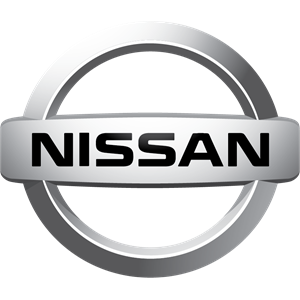 Nissan Versa Sedan Service ManualBody interior » Instrument panel (IP) » Squeak and rattle trouble diagnoses
Nissan Versa Sedan Service ManualBody interior » Instrument panel (IP) » Squeak and rattle trouble diagnoses
Generic Squeak and Rattle Troubleshooting
Generic Squeak and Rattle Troubleshooting
Refer to Table of Contents for specific component removal and installation information.
INSTRUMENT PANEL
Most incidents are caused by contact and movement between:
- Cluster lid A and the instrument panel
- Acrylic lens and combination meter housing
- Instrument panel to front pillar finisher
- Instrument panel to windshield
- Instrument panel pins
- Wiring harnesses behind the combination meter
- A/C defroster duct and duct joint
These incidents can usually be located by tapping or moving the components to duplicate the noise or by pressing on the components while driving to stop the noise. Most of these incidents can be repaired by applying felt cloth tape or silicone spray (in hard to reach areas). Urethane pads can be used to insulate wiring harness.
CAUTION: Do not use silicone spray to isolate a squeak or rattle. If you saturate the area with silicone, you will not be able to recheck the repair.
CENTER CONSOLE
Components to pay attention to include:
- Shift selector assembly cover to finisher
- A/C control unit and cluster lid C
- Wiring harnesses behind audio and A/C control unit
The instrument panel repair and isolation procedures also apply to the center console.
DOORS
Pay attention to the:
- Finisher and inner panel making a slapping noise
- Inside handle escutcheon to door finisher
- Wiring harnesses tapping
- Door striker out of alignment causing a popping noise on starts and stops
Tapping or moving the components or pressing on them while driving to duplicate the conditions can isolate many of these incidents. You can usually insulate the areas with felt cloth tape or insulator foam blocks from the NISSAN Squeak and Rattle Kit (J-43980) to repair the noise.
TRUNK
Trunk noises are often caused by a loose jack or loose items put into the trunk by the owner.
In addition look for:
- Trunk lid bumpers out of adjustment
- Trunk lid striker out of adjustment
- The trunk lid torsion bars knocking together
- A loose license plate or bracket
Most of these incidents can be repaired by adjusting, securing or insulating the item(s) or component(s) causing the noise.
SUNROOF/HEADLINING
Noises in the sunroof/headlining area can often be traced to one of the following:
- Sunroof lid, rail, linkage or seals making a rattle or light knocking noise
- Sun visor shaft shaking in the holder
- Front or rear windshield touching headlining and squeaking
Again, pressing on the components to stop the noise while duplicating the conditions can isolate most of these incidents. Repairs usually consist of insulating with felt cloth tape.
OVERHEAD CONSOLE (FRONT AND REAR)
Overhead console noises are often caused by the console panel clips not being engaged correctly. Most of these incidents are repaired by pushing up on the console at the clip locations until the clips engage.
In addition look for:
- Loose harness or harness connectors.
- Front console map/reading lamp lens loose.
- Loose screws at console attachment points.
SEATS
When isolating seat noise it's important to note the position the seat is in and the load placed on the seat when the noise is present. These conditions should be duplicated when verifying and isolating the cause of the noise.
Cause of seat noise include:
- Headrest rods and holder
- A squeak between the seat pad cushion and frame
- The rear seatback lock and bracket
These noises can be isolated by moving or pressing on the suspected components while duplicating the conditions under which the noise occurs. Most of these incidents can be repaired by repositioning the component or applying urethane tape to the contact area.
UNDERHOOD
Some interior noise may be caused by components under the hood or on the engine wall. The noise is then transmitted into the passenger compartment.
Causes of transmitted underhood noise include:
- Any component installed to the engine wall
- Components that pass through the engine wall
- Engine wall mounts and connectors
- Loose radiator installation pins
- Hood bumpers out of adjustment
- Hood striker out of adjustment
These noises can be difficult to isolate since they cannot be reached from the interior of the vehicle. The best method is to secure, move or insulate one component at a time and test drive the vehicle. Also, engine rpm or load can be changed to isolate the noise. Repairs can usually be made by moving, adjusting, securing, or insulating the component causing the noise.
Diagnostic Worksheet


REMOVAL AND INSTALLATION
